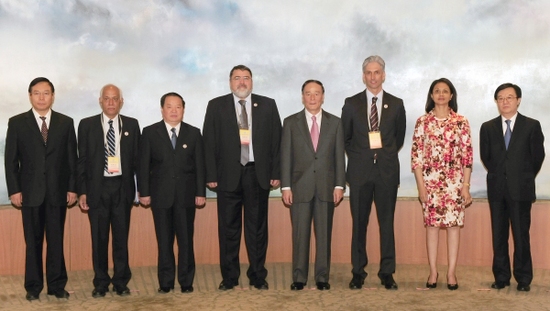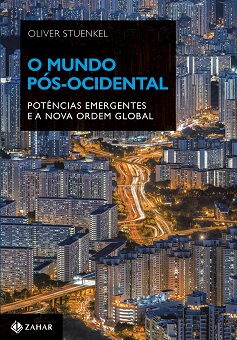
BRICS Competition Authorities’ Meeting in Beijing, 2011
One of the most common criticisms vis-à-vis the BRICS grouping is that their economies are incompatible. And indeed, except for China, which has strong economic ties with all the other BRICS, intra-BRICS trade is surprisingly low. Brazil’s trade with India, for example, is a mere 10 billion US-dollars, seven times smaller than Brazil’s economic ties with China. The same applies to the other BRICS, whose trade is dominated by China. Intra-BRICS trade in total is smaller than the BRICS’ trade with Africa, showing how disunited the BRICS are on the economic front. Yet the potential is vast. In 2011, for example, bilateral trade between South Africa and China grew by 32%, with India by 25% and with Brazil by 20%.
In response, BRICS governments have set up a series of initiatives to tackle the problem and find ways to increase trade. Four stand out: Regular meetings between BRICS trade ministers, BRICS competition authorities, a BRICS cooperatives forum and a BRICS Business Forum (along with a Business Council).
BRICS Trade Ministers
After an initial meeting held in Sanya, China, on 13 April 2011, trade ministers created a contact group entrusted with the task of proposing an institutional framework and concrete measures to expand economic cooperation both among BRICS countries. The contact group met for the first time on December 2nd, 2011, in Beijing. Since then, both trade ministers and the contact group has convened regularly. One focus has been on customs cooperation and trade facilitation to boost intra-BRICS trade. Doing so is fiendishly difficult as many bureaucracies have to be involved. For example, in 2011, an Indian IT firm failed to bring a specialist to Brazil to train employees for the period of four months because there was no adequate visa for her: a tourist of conference visa allowed her to stay for three months only, yet a work visa did not work either because she still received her salary from headquarters in India. Bureaucratic hurdles still make intra-BRICS trade and investment difficult.
BRICS Business Forum
The BRICS Business Forum (at times called “track III summit”) first took place in 2010, prior to the 2nd BRIC Summit in Brasília, and has taken place every year since then. At the most recent BRICS Business Forum in Durban, approximately 600 companies from the BRICS countries were present. Privately, however, executives complained that they only received participant lists on the day of the Forum, significantly reducing the potential to create meaningful ties. In 2013, an additional BRICS Business Council was created, which will attempt to bring together business associations from each of the BRICS countries and promote engagement between the business communities on an ongoing basis.
BRICS Cooperatives
In a similar way, cooperatives in the BRICS are increasingly engaging. In April 2010, the first Meetings of BRICS Cooperatives took place in Brasíla. Since then, cooperatives’ representatives have met on the sidelines of the yearly BRICS Leaders Summits. Despite the enormous size in each country – in China alone, more than 50 thousand companies are working within the cooperatives system. Aside from strengthening cooperation, the platform seeks to exchange experiences and best practices.
BRICS Competition Forum
Heads of competition authorities from Brazil (SEAE), Russia (FAS), India (CCI) and China (SAIC) organized the first BRIC Competition Conference in September 2009 in Kazan, Russia. Since then, their self-proclaimed goal is to curb anti-competitive practices at all levels, and contribute towards evolving transparent mechanisms and processes in its markets. Topics of meetings have included cartel enforcement, inter-agency cooperation and competition advocacy.
Towards stronger intra-BRICS trade?
What can all these initiatives achieve? It is unlikely that we will see any grand projects such as a “BRICS free-trade agreement”. Rather, policy makers will limit themselves to focus on bureaucratic issues such as visa and customs procedures, promoting more frequent flight and shipping connections and the use of each other’s currencies in intra-BRICS trade. This raises the question of whether so many parallel initiatives are necessary, given that they all have the same basic goal.
Read also:
What can the BRICS Academic Forum achieve?
A tale of five BRICS sister cities
Agriculture and food security: Brazil’s chance to assume leadership among the BRICS?
Photo credit: 2011 BRICS meeting official








